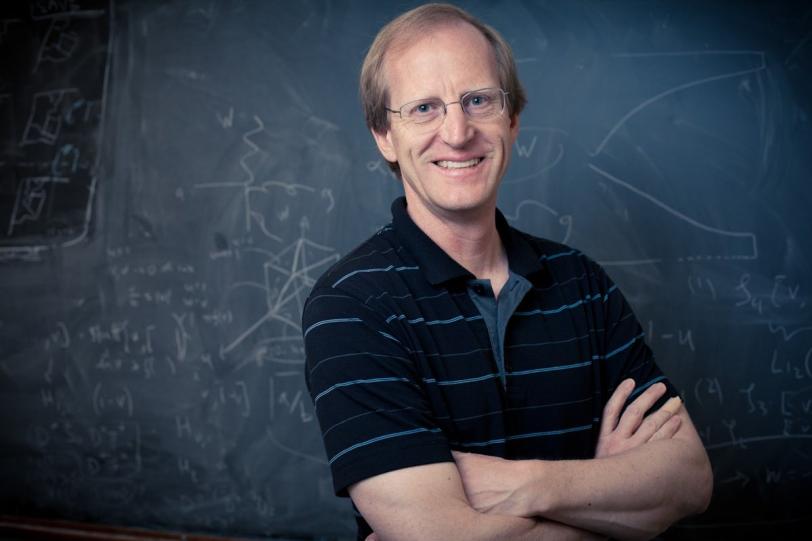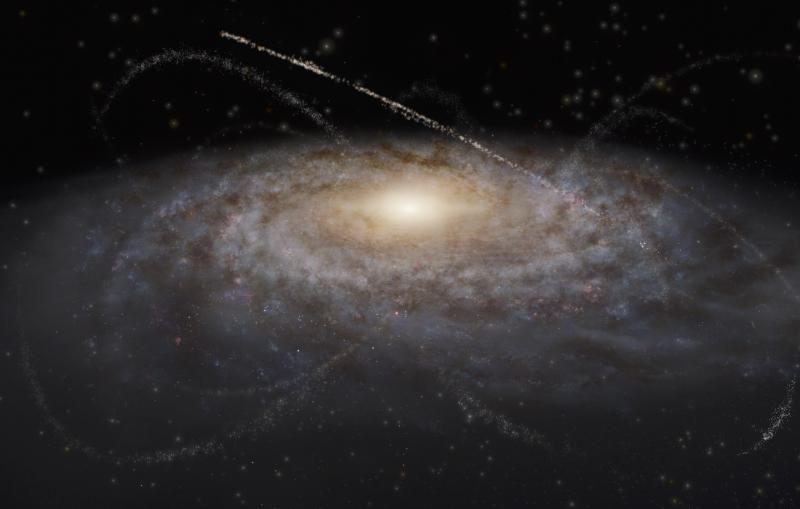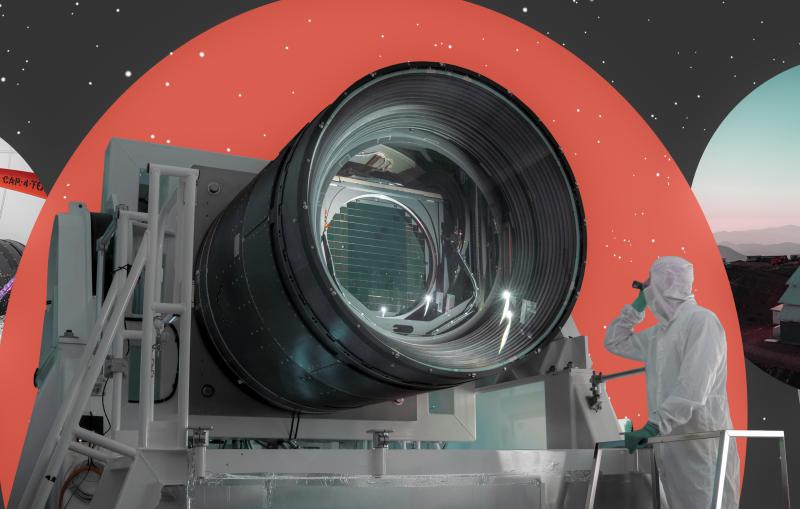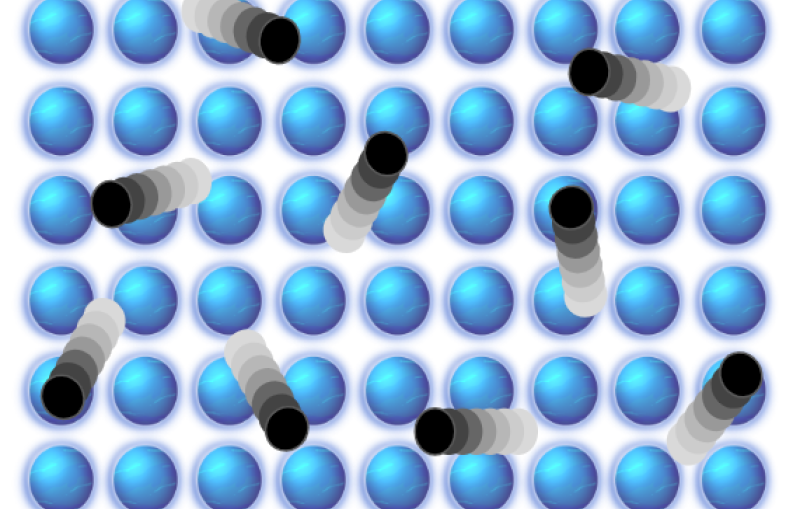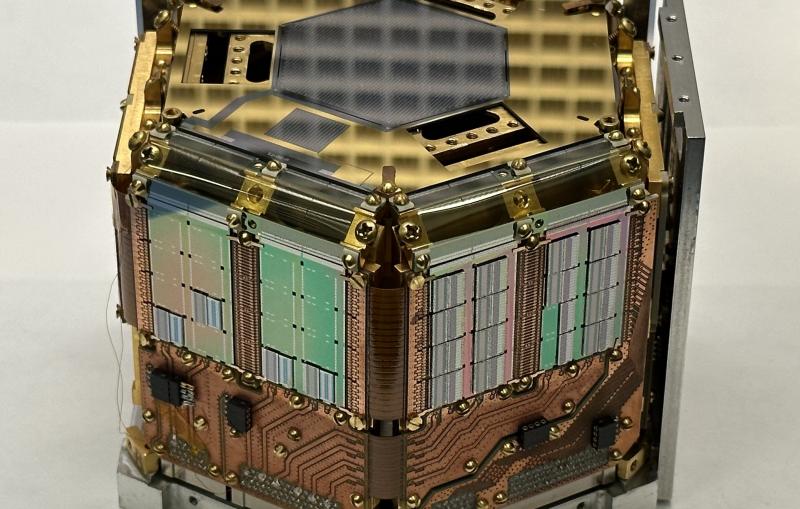SLAC Theorist Shares in Prestigious Physics Award
SLAC particle theorist Lance Dixon has been named co-winner of the 2014 J.J. Sakurai Prize for Theoretical Particle Physics, awarded each year by the American Physical Society.
By Lori Ann White
SLAC particle theorist Lance Dixon has been named co-winner of the 2014 J.J. Sakurai Prize for Theoretical Particle Physics, awarded each year by the American Physical Society "to recognize and encourage outstanding achievement in particle theory." He'll join his colleagues and collaborators, Zvi Bern of UCLA and David Kosower of the French research institute CEA-Saclay, to accept the $10,000 award in Savannah, Ga., next April.
The prize recognizes their work developing the Unitarity Method, a way of calculating probable outcomes for complicated particle interactions that are almost impossible to solve using standard methods.
"We essentially tried to reformulate how people do problems they used to attack with Feynman diagrams," Dixon said.
Feynman diagrams, introduced by Nobel Prize-winning physicist Richard Feynman more than 60 years ago, are a way to visualize the math behind the behavior of subatomic particles. But by the early 1990s – just when particle colliders around the world, like Fermilab's Tevatron and SLAC's own SLC, were on the hunt for missing fundamental particles and experimentalists needed help interpreting the data – Feynman diagrams were reaching the limits of their usefulness for the most complex collisions.
So Dixon and company looked for another way.
Bern and Kosower had developed a tool for these calculations that uses string theory, which posits that all fundamental particles and fields can be built up from infinitesimal vibrating strings.
Dixon had also been working on string theory, "But then I started looking for something more directly connected to experiment," he said. When colleagues Bern and Kosower invited him on board, Dixon joined the team.
They took a previously unsolved problem – two gluons going into a loop (a sort of particle "black box" in which many different interactions could take place) and three gluons coming out – and tried solving it using string theory's simpler approach to describing particle interactions. And it worked.
"We looked at the problem and realized there were more patterns – some terms we expected to see didn't show up and some coefficients canceled," Dixon said. With help from British theorist David Dunbar, they turned the patterns into generalizations based on the principle of unitarity, or the notion that the probabilities for all possible outcomes of an interaction should add up to one. This led to more solved diagrams. The new approach was simpler, yet more powerful than the one based on string theory. A succession of theorists has built on their work to solve a host of important loop diagrams, giving experimentalists the precise results they need to compare with their data.
"It's become especially important now that the Large Hadron Collider hasn't yet found any new particles besides the Higgs," Dixon said. "We'll probably need to understand the Standard Model to an unprecedented level to recognize new physics when it appears in the LHC data." The Unitarity Method can help with that.
Unitarity can also yield insights into some versions of supersymmetry, including one that includes gravity, the last fundamental force to join the quantum landscape. It may even be able to describe the graviton, the quantum mechanical expression of gravity.
Michael Peskin, a theorist who is an expert on the Higgs boson and Dixon's colleague at SLAC, expressed admiration for the team's prize-winning achievement.
"Lance and his collaborators started down this road 20 years ago and they had no idea how it would turn out," Peskin said. "But their work turned out to be vital to the research being done at the LHC."
Said Dixon, "From the beginning SLAC has given me a lot of freedom to work on what I thought was important." He continues to look for ways to help experimentalists. He and a growing number of collaborators are developing two computer programs, called BlackHat and SHERPA, which work in tandem to solve loop diagrams automatically. "We want to turn our work into a machine," he said.
Not even the Unitarity Method could have predicted that their work would also turn into a pop-culture touchstone – it's appeared on the television series, "Big Bang Theory," as one of fictional theorist Sheldon Cooper's many areas of expertise. But the attention hasn't turned Dixon's head too much.
"Apologies to Sheldon," he said, "but I think getting the Sakurai Prize is cooler."
Related links:
For a more complete – but technical – explanation of the Unitarity Method, see Dixon's guest post, "Calculating Amplitudes," on Sean Carroll's blog, Preposterous Universe.
Dixon follows SLAC Professor Emeritus Helen Quinn, who shared the award last year with her collaborator Roberto Peccei for their development of the theory of axions, and Professor Stanley Brodsky, who won in 2007.
Previous SLAC articles:
